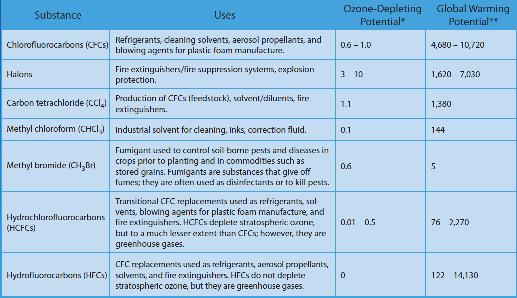
a(broad) perspective
In 1974, atmospheric scientists discovered that chlorofluorocarbons (CFCs) were causing the alarming depletion of the protective ozone layer that shields all life on Earth from the harmful ultra-violet radiation from the sun. These CFCs were present as propellants in aerosol cans and also used as refrigerants. The global scientific consensus and the severity of ozone depletion motivated the international community to establish the Montreal Protocol on Substances that Deplete the Ozone Layer (Montreal Protocol), one of the most successful international environmental treaties to date. The Protocol established specific targets for the reduction and eventual elimination of ozone-depleting substances. The Protocol’s success comes from the scientific expertise on ozone-depleting substances and universal participation. Developed countries also provide significant technical and financial assistance to developing countries, which encourages and enables them to reduce their dependence on these compounds.
EPA estimates that in the United States alone, every dollar invested in ozone protection yields $20 in societal health benefits. Between 1990 and 2165, that would amount to benefits of approximately $4.2 trillion, the agency says.
The Montreal Protocol made headlines with the 22nd Meeting of the Parties in Bangkok earlier this month. The United States, Canada, and Mexico proposed the use of the Protocol to phase out hydrofluorocarbons (HFCs), which contribute to climate change. Daniel Reifsnyder, U.S. Deputy Assistant Secretary of State for Environment and Development, noted that “the global community cares not where action on climate change is taken: only that it is taken.”
HFCs are widely used refrigerants that can be thousands of times more potent than carbon dioxide at trapping heat in the atmosphere and thus contributing to climate change. Production of HFCs is expected to multiply in the coming years due to increased demand for air conditioning and cars in developing countries and because of the ongoing phase-out of their predecessors, hydrochlorofluorocarbons (HCFCs).
In terms of the effect on global warming, by 2050, annual emissions of HFCs could be the equivalent of 5.5 to 8.8 billion tons of carbon dioxide, which is roughly the amount of carbon dioxide emitted in the U.S. each year currently. Samuel LaBudde of the Environmental Investigation Agency, a London-based organization, says, “These are the most cost-effective, high-yield opportunities for reducing greenhouse gas emissions in the world. It’s senseless to delay and rely solely on the [United Nations Framework Convention on Climate Change] process when such a significant part of the solution can be implemented immediately at a far less cost through the Montreal Protocol.”
The table below, from EPA, shows chemicals covered by the Montreal Protocol (except HFCs), their potential to deplete the ozone, and their potential to contribute to climate change. The two potentials are often related, meaning that reduction of ozone-depleting substances has also mitigated climate change. The U.S. has met its deadlines for the phase-out of chlorofluorocarbons, halons, carbon tetrachloride, methyl chloroform, and methyl bromide and is expected to meet the deadline for phasing out HFCs by 2030.

The parallels are unmistakable between the current debate on climate change action and the ozone depletion debates in the 1980s. The big industry players first denied the causation link, and then downplayed the significance of the impact. Eventually, however, the restrictions—including Title VI of the Clean Air Act in the United States—led to more ozone-friendly alternatives that are now widely used. While the effort to use the Montreal Protocol to address HFCs did not move forward during this last meeting, the seed has been planted for the ongoing discussions in Cancun.
Yee Huang, Policy Analyst, Center for Progressive Reform. Bio.
| Be the first to comment on this entry. |